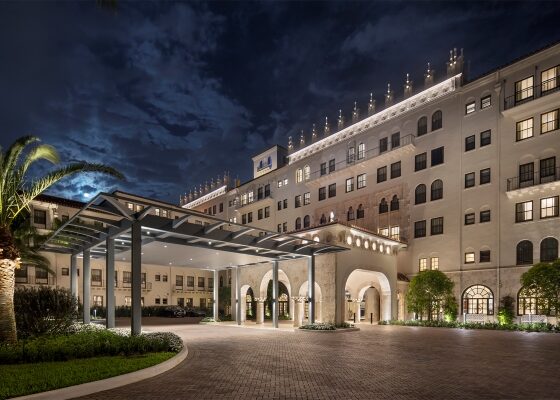
Historic hotels have a unique appeal to guests that can drive strong performance in the lodging market, but maximizing the value proposition of these properties requires a multifaceted effort, from preservation to promotion to staff training and more. Here are six operational practices that my team at Davidson Hospitality Group implements to drive success in this asset class.
1) Asset Preservation to Maintain Authentic Character
It’s important to maintain the architectural details, original design elements, and cultural features that make the property unique. Working with preservation specialists helps to restore and protect historic structures while complying with regulations. Hotel marketing agencies can then highlight these elements to appeal to guests seeking authenticity.
2) Narrate the Story Everywhere
Develop strong storytelling around the hotel’s history, its architecture, famous guests, cultural role, or unique events. For example, Grand Hotel on Mackinac Island in Michigan leverages its 1887 heritage with descriptive stories around how the hotel was built, when additions were made, and milestone events such as Somewhere in Time being filmed there. In fact, the property hosts a popular “Somewhere in Time Weekend” every season. Incorporate stories into tours, guest literature, digital content, and staff training to ensure team members can be narrators when guests are staying at a historic property. This storytelling can differentiate the property from modern chain hotels. Another idea is to employ a historian within the team to serve as the curator and fact checker of all content being created. This individual would also provide guided tours as a feature of the historic hotel, such as at the Davenport Hotel in Spokane, Washington. Last but not least, create food, beverages, and amenities that complement the narrative of the historic hotel, e.g., the Peanut Butter Brittle at the Davenport Hotel.
3) Engage the Local Community
Partner with local historians, museums, and cultural organizations to support the hotel’s narrative. For example, Hotel Viking in Newport, Rhode Island, partners with the Jazz Festival in Newport, a regionally recognized heritage festival. And on Mackinac Island, the Grand Hotel team operates the food and beverage at The Fort, a historic British and American military outpost. Hosting events, exhibits, or lectures is another way to make the hotel a cultural hub.
4) Train Staff on the Pillars of the Hotel
Provide training not only in service excellence, but also on the hotel’s history, significance, and the pillars of the brand narrative. Moreover, encourage staff to share historical anecdotes with guests specific to their area of operations. A hospitality culture rooted in both tradition and personalized service that is always “on brand” with verbiage appropriate to the heritage of the hotel ultimately makes the guest experience more compelling.
5) Preventative Maintenance and Defensive Capital
Historic hotels require a long-term vision of defensive capital and a commitment to asset preservation that needs to be mutually developed with ownership and the operator. Grand Hotel on Mackinac Island has a 20-year plan, as an example. Toward that goal, establish a long-term maintenance plan for historic features to avoid costly restorations. Preventative maintenance within a historic hotel is uniquely different, and studies must be done on architecture beyond what can be seen to the naked eye. In addition, seek grants, tax credits, or heritage funds where available to support preservation. In certain circumstances, a historic preservation fee can be applied to offset preservation for municipally defined “historic” buildings that adhere to a local code.
6) Strategic Planning for Demographic Shifting
Historic hotels typically have a large following from heritage and legacy customers; understanding how to shift those demographics, where necessary, is vital for the future. An example of this brought to life is the new Lobby Bar at the Davenport Hotel in Spokane, which looks as if it has been there since the original construction and is now attracting a young professional clientele. Leveraging a consumer analytics tool, such as Buxton, helps you understand the hotel’s current guest demographics as well as demographics you are targeting when making decisions about the first five best practices referenced.




